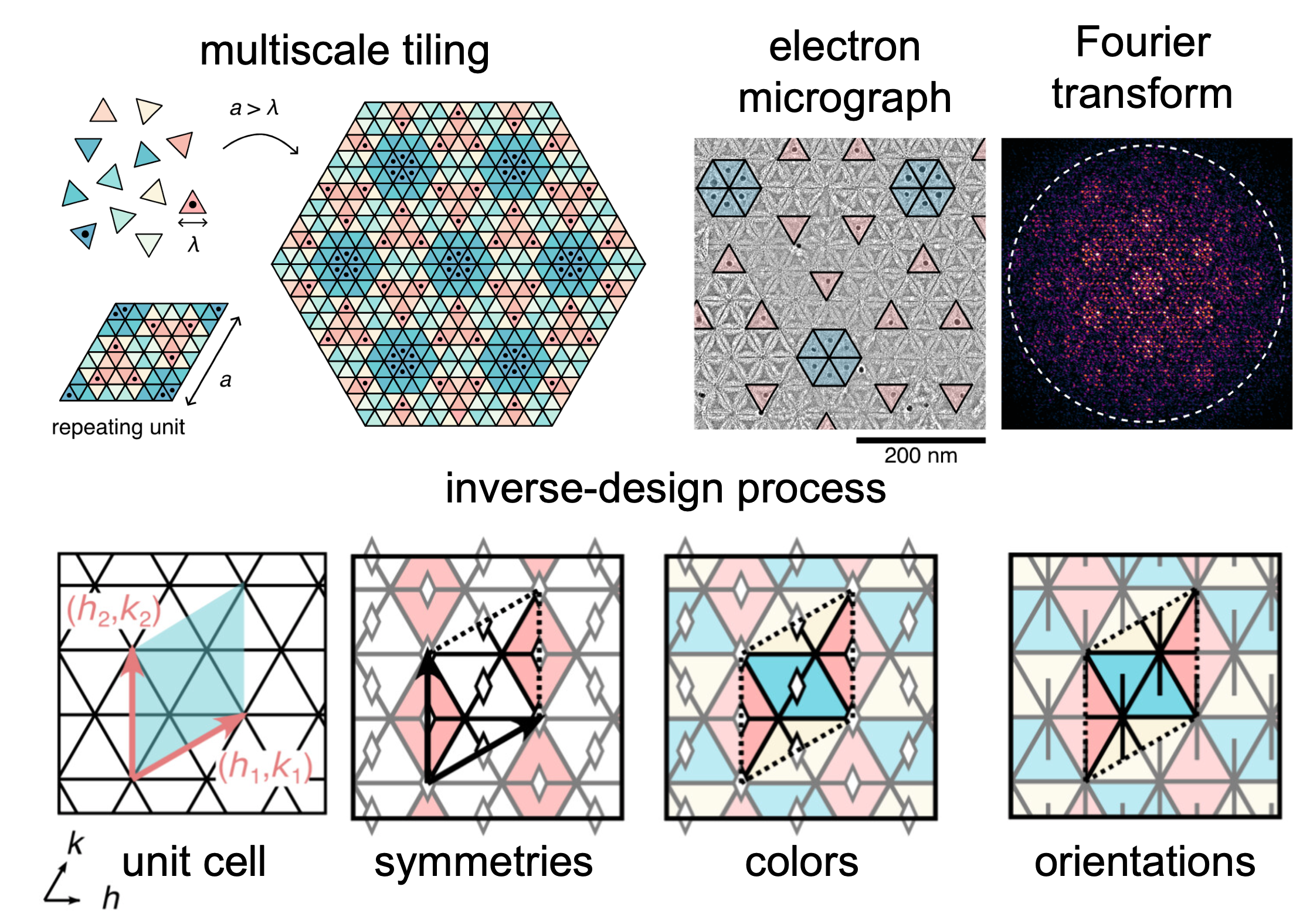 Triangular subunits with chemically specific interactions self-assemble into two-dimensional tilings with large unit cells comprised of many unique subunit species, which could find applications in photonics and plasmonics. New design algorithms show how to define the mutual interactions between the various particle species to produce a user-specified complex crystal with a multicomponent unit cell by exploiting symmetry. Experiments using DNA-origami subunits verify this design approach and produce two-dimensional tilings with unit-cell dimensions approaching the wavelength of visible light, as quantified by electron microscopy. An investigation of the design ecomomy, i.e., the number of unique subunits required to produce a tiling with a given unit-cell area, reveals a set of economical design rules to guide future experiments.
Triangular subunits with chemically specific interactions self-assemble into two-dimensional tilings with large unit cells comprised of many unique subunit species, which could find applications in photonics and plasmonics. New design algorithms show how to define the mutual interactions between the various particle species to produce a user-specified complex crystal with a multicomponent unit cell by exploiting symmetry. Experiments using DNA-origami subunits verify this design approach and produce two-dimensional tilings with unit-cell dimensions approaching the wavelength of visible light, as quantified by electron microscopy. An investigation of the design ecomomy, i.e., the number of unique subunits required to produce a tiling with a given unit-cell area, reveals a set of economical design rules to guide future experiments.
D Hayakawa, TE Videbæk, GM Grason, WB Rogers, “Symmetry-guided inverse design of self-assembling multiscale DNA origami tilings” ACS Nano (2024) 18 (29) 19169-19178.